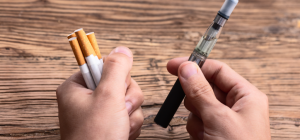 Most people love the sunshine, and love being out in it, especially in the summer months. And most people at one time or another overdo it and end up with sunburn, and in many cases on a regular basis, because of lack of protection from harmful UV rays. In worst case scenarios, skin damaged by the sun can result in skin cancer.
Most people love the sunshine, and love being out in it, especially in the summer months. And most people at one time or another overdo it and end up with sunburn, and in many cases on a regular basis, because of lack of protection from harmful UV rays. In worst case scenarios, skin damaged by the sun can result in skin cancer.
There are various types of skin cancer and a range of skin cancer treatment options which can be prescribed depending on the type and severity of the cancer.
However, the most important aspect of skincare in such cases is the early detection and diagnosis of potentially cancerous moles or skin abnormalities by a specialist dermatologist so that early and effective treatment can be prescribed.
Diagnostic methods
Mole mapping
A common technique used by dermatologists is mole mapping. This serves to identify changes in a mole which may indicate the presence of skin cancer. Mole mapping is carried out through the examination of a sequence of skin photos over time, which allows the dermatologist to ascertain the cause of any changes occurring, and prescribe the appropriate treatment.
Early detection of skin cancer is critical for effective treatment. This is a non-invasive technique used by dermatologists which does not require a biopsy and is very effective in evaluating the cause of skin pigmentation or lesions on the skin.
Confocal microscopy
A more recent development in the diagnosis of skin cancer is the use of confocal microscopy, which involves using a laser-assisted microscope. This allows examination of a mole at a much deeper level than is possible simply by normal visual inspection and conventional microscopy techniques. In particular, confocal microscopy has proven useful in the case of moles which would normally be challenging to diagnose.
Sun skincare tips
Of course, diagnosing possible skin cancer is important, but the best plan is actually prevention of the condition, which can be achieved through sensible precautions in relation to exposure to the sun. Common sense precautions you can take include:
- Always wear sunscreen with a high SPF (Sun Protection Factor) when outdoors. An SPF of 15 should be considered as a minimum level of protection, and use a higher SPF if you intend to spend longer periods of time outside.
- Wear sunglasses when outdoors even if it seems dull or cloudy. Shading your eyes from the sun's rays helps protect the particularly sensitive skin around the eyes from wrinkles. It also helps in the prevention of macular degeneration and cataracts, especially in older people.
- Wearing a brimmed hat helps protect not only the top of your head, but also your face and neck.
- Long pants and long sleeves offer the best protection against the sun.
- If you're going to be outside, plan to avoid the midday sun, which is strongest between around 10am to 4pm.
You should self check for moles and other skin abnormalities on a monthly basis, and if you're 40+ book an appointment with a dermatologist for a skin examination once a year.








Mole mapping technique is also used to measure melanoma.